Nordic Semiconductor NRF52832-QFAA-R

Nordic Semiconductor
2Mbps 2.4GHz Bluetooth,General-purposeISM>1GHz 2.4GHz I2C,SPI,UART QFN-48-EP(6x6) RF Transceiver ICs
Livraison
Paiement
NRF52832-QFAA-R Introduction
NRF52832-QFAA-R is a multi-protocol wireless system-on-chip (SoC) based on the ARM Cortex-M4 core launched by Nordic Semiconductor. It supports Bluetooth Low Energy (BLE) 5.0, ANT and 2.4 GHz private wireless protocols, and is widely used in the Internet of Things (IoT), wearable devices, smart homes and health monitoring.
NRF52832-QFAA-R Similar or Alternative
Product comparison
NRF52832-QFAA-R vs EM357-RTR vs JN5161/001,515 vs JN5164/001,515 vs ATA5425-PLQW Comparison
| Parameter | NRF52832-QFAA-R | EM357-RTR | JN5161/001,515 | JN5164/001,515 | ATA5425-PLQW |
|---|---|---|---|---|---|
| Image | 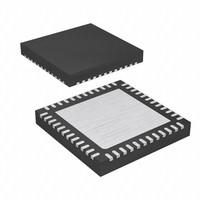 | 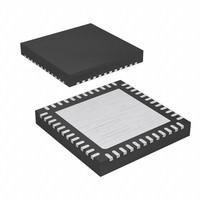 | 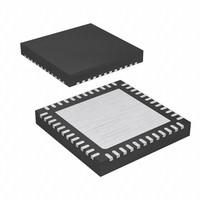 | 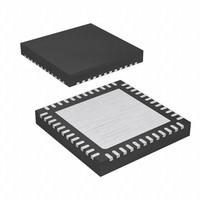 | 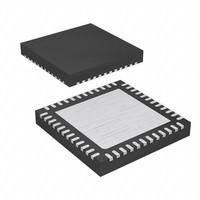 |
| Manufacturer | Nordic Semiconductor | Silicon Labs | NXP Semiconductors | NXP Semiconductors | Microchip Technology |
| Core | ARM Cortex-M4 | ARM Cortex-M3 | ARM Cortex-M3 | ARM Cortex-M3 | Custom (ASK/FSK RF core) |
| Package | QFN-48 | QFN-48 | QFN-40 | QFN-40 | QFN-48 |
| Operating Frequency | 2.4 GHz (Bluetooth) | 2.4 GHz (Zigbee) | 2.4 GHz (IEEE 802.15.4) | 2.4 GHz (IEEE 802.15.4) | 315 MHz / 433 MHz / 868 MHz |
| Wireless Protocols | Bluetooth 5.0, ANT | Zigbee, IEEE 802.15.4 | Zigbee, IEEE 802.15.4 | Zigbee, IEEE 802.15.4 | Proprietary |
| Flash Memory | 512 KB | 192 KB | 128 KB | 160 KB | - |
| RAM | 64 KB | 12 KB | 32 KB | 32 KB | - |
| GPIO Pins | 32 | 20 | 20 | 20 | 6 |
| Operating Voltage | 1.7V - 3.6V | 2.1V - 3.6V | 2.0V - 3.6V | 2.0V - 3.6V | 2.0V - 3.6V |
| Power Consumption | Low-power modes available | 26 mA (TX), 23 mA (RX) | 35 mA (TX), 18 mA (RX) | 35 mA (TX), 18 mA (RX) | 11.5 mA (TX), 10 mA (RX) |
| Special Features | Floating-point unit (FPU), NFC | Integrated MAC for Zigbee | Integrated MAC for Zigbee | Integrated MAC for Zigbee | ASK/FSK modulation |
| Temperature Range | -40°C to 85°C | -40°C to 85°C | -40°C to 125°C | -40°C to 125°C | -40°C to 85°C |
| Use Cases | Bluetooth applications, IoT | Zigbee networks, smart metering | Smart lighting, home automation | mart lighting, home automation | Wireless remote control, telemetry |
Description
NRF52832-QFAA-R:
Supports Bluetooth 5.0 and low-power communication.
Suitable for IoT, wearable devices, Beacon and other applications.
EM357-RTR:
Designed for Zigbee network, suitable for smart home, energy management and sensor network.
JN5161/5164:
Supports Zigbee and 802.15.4 protocols, mainly used for low-power wireless communication.
JN5164 provides larger memory (160 KB).
ATA5425-PLQW:
Focusing on ASK/FSK modulation, it is suitable for low-frequency wireless communication (such as remote control, garage door control, alarm system).
If you have more specific needs (such as selecting a specific frequency band, protocol or power consumption index), you can make a detailed comparison based on the application scenario.
NRF52832-QFAA-R Datasheet
NRF52832-QFAA-R Main Features
1.High-performance processor:
Equipped with ARM Cortex-M4 core with hardware floating-point unit (FPU).
The main frequency is up to 64 MHz.
2.Multi-protocol wireless support:
Supports Bluetooth 5.0 (including LE 2M, LE Coded PHY and extended broadcast function).
Supports ANT protocol and Nordic's customized 2.4 GHz private protocol.
3.Low-power design:
Especially suitable for battery-powered devices.
Multiple low-power modes, extremely low energy consumption.
4.Powerful storage resources:
Internally integrated 512 KB Flash and 64 KB RAM.
5.Rich peripheral interfaces:
GPIOs up to 32, support multiplexing functions.
Support peripherals such as SPI, UART, I²C, PWM, ADC, etc.
6.Small package:
QFN48 package, small board area, suitable for space-constrained applications.
NRF52832-QFAA-R functional advantages
1.Enhanced functions of Bluetooth 5.0:
Fast rate: Support LE 2M PHY, the transmission rate is twice that of BLE 4.2.
Wider coverage: Provide better signal propagation distance through LE Coded PHY.
Higher efficiency: Extended broadcast function supports larger broadcast packets.
2.Hardware floating-point operation support:
ARM Cortex-M4 core is equipped with FPU, suitable for applications requiring complex calculations.
3.Low power consumption optimization:
Supports deep sleep mode, current consumption can be as low as 0.7 μA.
Ideal for devices that require long battery life.
4.Powerful peripheral interface:
Provides a variety of interfaces (UART, SPI, I²C, etc.) to facilitate the integration of external sensors and modules.
Integrated 12-bit ADC, can directly acquire analog signals.
NRF52832-QFAA-R application scenarios
Smart home: Smart bulbs, wireless door locks, environmental sensors.
Wearable devices: Health bracelets, smart watches, sports trackers.
Internet of Things (IoT): Industrial monitoring, asset tracking, wireless tags.
Health monitoring: Heart rate monitor, blood oximeter, thermometer.
Consumer electronics: Remote control, game controller, wireless audio equipment.
NRF52832-QFAA-R development resources
Development tools:
Support Nordic's official development tool chain nRF5 SDK.
Compatible with third-party IDEs such as Keil, Segger Embedded Studio and IAR.
Development board support:
Official development board nRF52-DK provides hardware debugging and peripheral development interface.
Supports Arduino Shield expansion.
Development language and library:
Provides a rich Bluetooth protocol stack (SoftDevice).
The sample code covers common functions such as BLE connection, sensor integration, etc.
NRF52832-QFAA-R FAQs
1. What wireless protocols does NRF52832-QFAA-R support?
Answer: NRF52832-QFAA-R supports the following wireless protocols:
Bluetooth 5.0 (including low-power Bluetooth BLE).
ANT protocol.
Nordic customized 2.4 GHz private protocol.
2. What are the main advantages of Bluetooth 5.0?
Answer: The main improvements of Bluetooth 5.0 compared to previous versions include:
Higher data rate: support LE 2M PHY, the rate is increased to 2 Mbps.
Longer communication distance: Enhanced signal coverage through LE Coded PHY.
Larger advertising packets: Support extended advertising functions and increased data capacity.
3. What is the power consumption of NRF52832-QFAA-R?
Answer:
Transmit (TX @ 0 dBm): about 5.3 mA.
Receive (RX): about 4.6 mA.
Standby mode: about 0.7 μA.
The low power consumption makes it very suitable for battery-powered IoT and wearable devices.
4. Does NRF52832-QFAA-R support external crystal oscillators?
Answer: Yes, NRF52832-QFAA-R supports external crystal oscillators. The typical configuration is:
High frequency crystal oscillator (HFCLK): 16 MHz, used for Bluetooth communication and main frequency clock.
Low frequency crystal oscillator (LFCLK): 32.768 kHz, used for timing and RTC in low power mode.
5. What is the maximum storage capacity of NRF52832-QFAA-R?
Answer: NRF52832-QFAA-R internally integrates:
Flash memory: 512 KB.
RAM: 64 KB. Suitable for storing Bluetooth protocol stack (SoftDevice) and applications.
6. What is the operating voltage range of NRF52832-QFAA-R?
Answer: The operating voltage range of NRF52832-QFAA-R is 1.7V to 3.6V. It supports battery-powered applications, including lithium batteries and button batteries.
7. Does NRF52832-QFAA-R support NFC function?
Answer: Yes. NRF52832-QFAA-R integrates an NFC-A tag interface that can be used for device pairing or other near-field communication applications.
8. How to develop NRF52832-QFAA-R applications?
Answer: Development tools and resources include:
nRF5 SDK: Official development package, including BLE examples and drivers.
IDE: Supports Keil, IAR and Segger Embedded Studio.
Development board: You can use nRF52 DK (development kit) to get started quickly.
Programming method: Supports J-Link emulator debugging and burning.
9. What is the package type of NRF52832-QFAA-R?
Answer: NRF52832-QFAA-R uses QFN48 (7mm × 7mm) package, which is suitable for small device design.
10. What are the typical application scenarios of NRF52832-QFAA-R?
Answer:
Wearable devices: smart watches, health monitoring devices.
Smart home: smart bulbs, wireless door locks, remote controls.
Internet of Things: asset tracking, environmental sensors.
Consumer electronics: wireless headphones, game controllers.
11. How to upgrade the firmware of NRF52832-QFAA-R?
Answer: NRF52832-QFAA-R supports OTA (Over-The-Air) upgrades, which can remotely update the firmware through a Bluetooth connection. Developers are required to integrate the DFU (Device Firmware Update) function in the application.
12. What is the difference between NRF52832-QFAA-R and NRF52840?
Answer:
NRF52840 provides higher performance:
Flash capacity is 1 MB (NRF52832 is 512 KB).
RAM capacity is 256 KB (NRF52832 is 64 KB).
Supports Zigbee and Thread protocols.
Provides a USB interface.
NRF52832 is more suitable for power-sensitive devices with lower resource requirements.
13. How secure is NRF52832-QFAA-R?
Answer: NRF52832 provides AES-128 hardware encryption support to ensure communication data security. Developers can use software protocol stacks to implement more advanced security features.
14. What is the RF performance of NRF52832-QFAA-R?
Answer:
Transmission power: adjustable, ranging from -20 dBm to +4 dBm.
Receive sensitivity: -96 dBm in BLE mode, ensuring reliable communication.
15. How to choose NRF52832-QFAA-R and other BLE chips?
Answer: The selection criteria include:
Protocol requirements: If Zigbee/Thread is required, it is recommended to choose NRF52840.
Storage requirements: If 512 KB Flash is insufficient, it is recommended to choose a higher configuration model.
Power consumption requirements: NRF52832-QFAA-R has low power consumption and is suitable for battery-powered devices.
Nordic Semiconductor
En stock : 8811